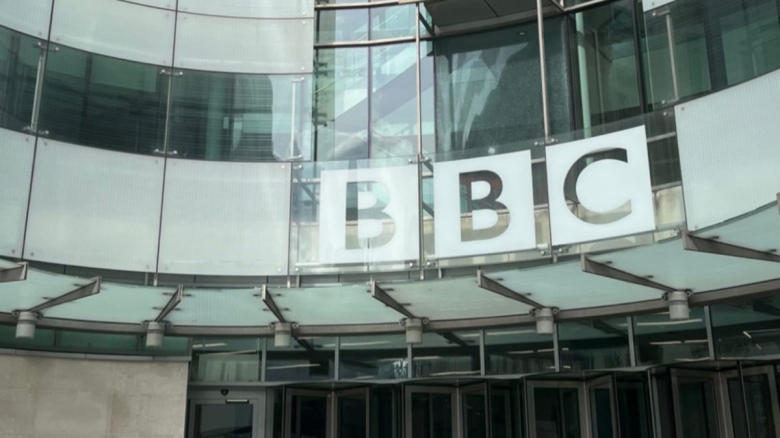In our increasingly digital society, some of you still don’t know how to caption your social media content for sites such as Facebook, Twitter, Instagram, TikTok and YouTube. This guide will show you how.
But first, some good reasons why you should caption your content, from a Deaf journalist who knows. Alongside the initial benefit of making your videos accessible to Deaf people, subtitles are hugely helpful to those with auditory processing disorder, autistic people and those for whom English is a second language – to name but a few.
In some cases, doing so can actually increase your viewership. YouTube looks upon it favourably, and given Facebook, Twitter and Instagram all have autoplay features where sound isn’t immediately on, it just makes sense to caption your content to have people engaged from the outset.
Although, on that note…
Don’t do these
- Don’t partly caption a video. None of this ‘tap for sound’ nonsense halfway through, because we Deaf people can’t do that. Caption the video in full.
- Similarly, don’t paraphrase your captions. Yes, there’s sometimes character limits on platforms and editing apps which restrict the length of captions you can place on videos without obscuring your face/objects, but you can just time code it into two smaller captions. The ideal length is two lines of text, with the ideal colour settings being yellow text on a full black/slightly transparent background. Avoid using white text on a black background, as this isn’t accessible to those with astigmatism (the text can appear fuzzy).
- Don’t censor swear words if they’re spoken in the video. Deaf people are not children (unless your audience is children, in which case, any rare curse words would be censored in the audio, so can be done so in the captions). We do not need to have naughty words redacted; they can appear in their full glory in the captions. Much like the other bullet points in this list, if you do any of these, then you create a different experience for your Deaf audience compared to your hearing audience – that, by definition, isn’t access.
- Don’t. Display. A. Single. Word. At. A. Time. There’s been a tendency in recent years for content creators to animate their captions, or display them one word at a time at rapid pace. While Deaf people like me have become accustomed to reading text at speed, others who rely on captions may well need some extra time to process the information. Two lines of text, closely matched to the speech, will give readers a suitable amount of processing time. If you need to indicate another speaker, either change the text colour (green or blue are good alternatives) or introduce them by name at the start of the caption.
- Don’t use captions to joke. It’s an access feature, for goodness’ sake. My accessibility is not your punchline. It also goes back to the equal viewing experience point mentioned above.
With that out of the way, let’s move on to the social media platforms.
I’m starting with Zuckerberg’s platform because the recommendation is simple: do not use its own captioning tool to caption your video – it’s atrocious and almost completely impossible to use.
You’re better off editing the video in a video editor (more on that below) and ‘burning in’ the captions – adding them as part of the export – to the video there, so they appear on all versions of the clip across multiple platforms.
The bird app is not too dissimilar, in the sense that is easier to ‘burn in’ the captions – not least because the only functionality they have at present is to upload a .srt captions file, which for many of us is easier to produce and export from a captions editor we’re already using.
Instagram (Stories, Reels and Video Posts)
Once you’ve filmed a Story or Reel in which speech can be heard, go to the top right and tap the smiling sticker icon. Then tap (or search for) the Captions sticker. When this is done, it should start transcribing the audio.
At this point, you’ll see a selection of display formats along the bottom. It’s best to select the third one across, so you can then tap the ‘A’ icon at the top of the screen to add a background. Other options where text appears one by one isn’t the most accessible, for reasons stated above.
Don’t make the captions too small, either. You may also notice in the final checks view just before publishing, that you can go to advanced settings and select ‘show captions’. Turning this on (it’s also available after publishing) displays inaccurate, automatic captions on the video. Leave it off, and make sure you either add them in your own video editor, or using Instagram’s sticker tool.
If you need to edit anything from the captions sticker, you just need to tap, and rewrite the words. It’s best you do this when swear words are uttered, as Instagram wrongly asterisks/censors and bleeps these out.
Any video on Instagram is now seen as a Reel, so the captions sticker should be available in the editor before publishing.
TikTok
The clock app is not too dissimilar to Instagram, in that you can add automatic captions to your video and then go in and amend them. There’s more information on this over on TikTok’s newsroom article.
YouTube
YouTube’s captioning tools have come a long way in recent years, and it’s certainly a lot easier to caption a video now compared to a few years ago. If you’re not in a position to delegate captioning to an editor or trusted volunteer, then there are three main ways in which you can do this yourself:
- Upload a file: For reasons stated above (see the Twitter section), most people won’t use this option because such files can be downloaded from a video editor where it’s probably easier to ‘burn’ the captions into the video and then export.
- Auto-sync: This approach is considerably useful if you’re working with scripted content. You just paste the spoken content/script into the text box and allow YouTube to assign the timings to the text. It then becomes a case of ensuring these are correct and don’t disjoint the flow of the text too much, and then hitting publish.
- Manually add captions: This is, of course, the longer and more time-consuming option, but it is worth it for increased engagement and the chances of the algorithm looking upon your video more favourably. You also have the added benefit of being able to choose between captioning by timestamps, or typing out all of the text into a text box and then worrying about timings later.
A fourth approach allows for you to go in and edit the automatic captions (again, either by timestamp, or as one whole block/stream of text), which saves you a fair bit of time compared to typing it all out via option 2 above. However, this has been pretty temperamental as of late, working only on certain videos (longer videos are far more likely to not come with captions). More information on the types of uploads automatic captions will work with can be found on YouTube’s Help Centre.
Mobile captioning apps
I won’t be able to advise on how to work with all of the following apps, as some are Android apps and I’m an iPhone user, but these mobile applications allow you to quickly add captions to filmed videos before you share them on your social media platforms:
- MixCaptions (iOS and Android – free)
- AutoCap (iOS and Android – free)
- Clips (iOS only – free and often pre-installed)
- SubCap (iOS and Android – free to download but £31.99 for six months. 3-day free trial available)
Desktop captioning software
My go-to editing software which is free to download and, for the most part, pretty impressive for what it offers, is DaVinci Resolve. You can add subtitles as part of the editing tools, customise the caption style, and be informed as to when it may be best to split up the text into another new caption to allow for easy processing.
Kapwing offers a limited amount of free automatic transcription for a video which you can then go in and edit. A slight downside is that it will display a watermark in the bottom right-hand corner, but this can easily be cropped out in video editing software.
Headliner is another option, and I tend to use this more for podcast clips in need of captioning before being shared on social media. Like Kapwing, the offering is limited on its free mode.
Need a hand?
This is just a basic guide and introduction to captioning your social media videos. If you or your organisation are looking for someone to advise on how to make your online content more accessible, I provide consultancy services for just that. Find out more over on my Services webpage.



























